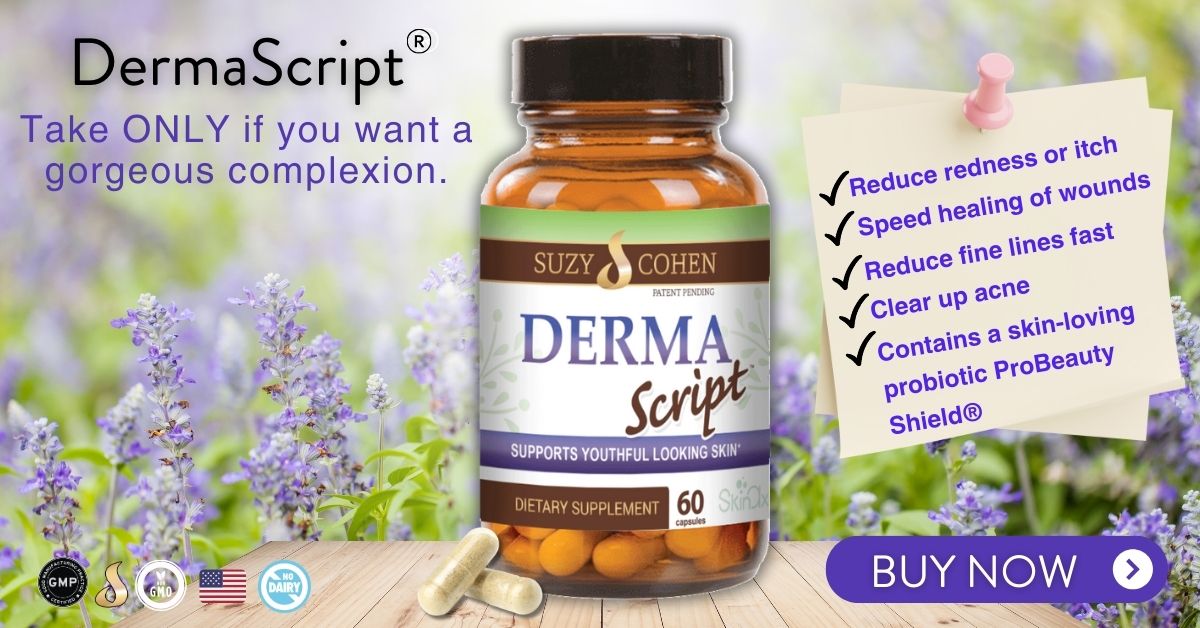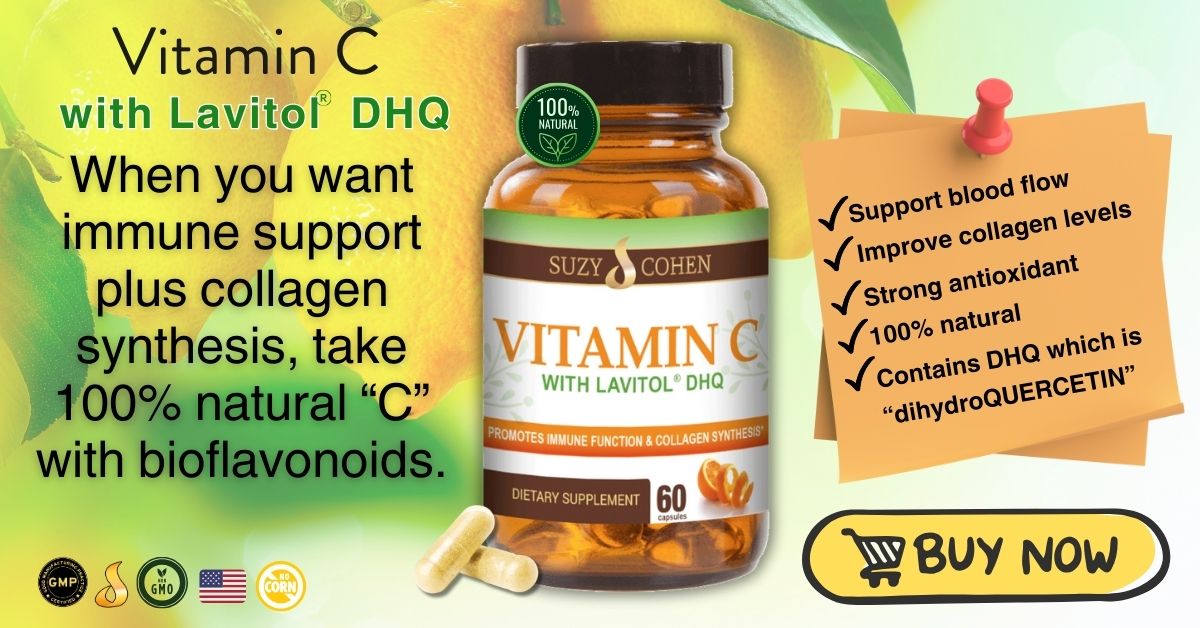What's On This Page?
ToggleRadiant skin is something many people seek, and probiotics may be the secret sauce! Sometimes our skin is a universal indicator of your true health status on the inside. Today’s focus is on the little microorganisms too small to see with the naked eye. There are trillions of them living inside you, and on your skin. Some are the good guys, some are the bad ones that lead to infection, inflammation and redness, itching and more! I made a video that you can watch to explain it, CLICK HERE.
When we hear the term probiotic, we immediately think of a dietary supplement that helps with digestion, constipation, diarrhea or other gastrointestinal conditions. When the balance tilts between the good and bad bacteria, and the bad ones take up residence in your gut, it is termed dysbiosis.
It leads to intestinal permeability such that food proteins from gluten and dairy leak out into your bloodstream and cause food allergies, and as a result, autoimmune diseases flare up more frequently, and with more vigor.
We never think of probiotics for our skin, or for that matter, our face!
Staring today, think of probiotics (aka “gut bugs) as friendly organisms that rescue skin, reduce inflammation and redness, heal pimples and improve skin texture.
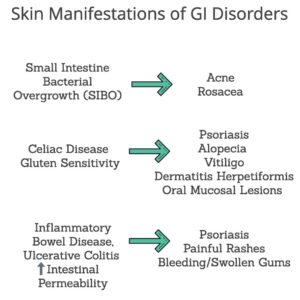
GI microflora in the gut has a tremendous impact on skin, this is why so many people with GI diseases such as gluten sensitivity, SIBO, Crohn’s disease, Inflammatory Bowel Disease and IBS (irritable bowel syndrome) also have skin manifestations!
The way it works is like this: When you have gut dysbiosis, the harmful (pathogenic) bacteria signal your immune system, but in a negative manner, and then when the pathogenic organisms die in your intestinal tract, their metabolic ‘pieces and parts’ float out through the leaky gut barrier, and into your bloodstream!
Thyroid Conditions and Skin Health
Inflammation in the body rises, and some of the ‘pieces and parts’ land in your skin (or your joints, or thyroid gland or wherever).
Your immune system sees this trash and sends out an army of cytokines to combat the foreign invader. Kill that, before it kills you, might be the motto. But in doing so, your immune system overreacts your skin starts to show the long-term effect of the altered microbiome of your skin, now dealing with its own “dysbiosis.”
In other words, an unhealthy gut microbiome leads to the same problems in your skin microbiome, tilting you to the direction of disease. Probiotics are useful because they help drive out pathogenic bacteria, but only certain strains.
You can’t be indiscriminate about it or you will launch a new autoimmune attack by taking a bunch of foreign organisms that don’t go well with your own, current microflora fingerprint. These are after all, gut bugs. You can’t just take any ole’ organism and expect it to help. Supplement makers have gone a little crazy lately putting in billions of organisms, many of which were never meant to be consumed by humans!
The role of probiotics for skin health is emerging as one of the most valuable considerations, especially for immune driven skin conditions like rosacea, psoriasis and eczema.
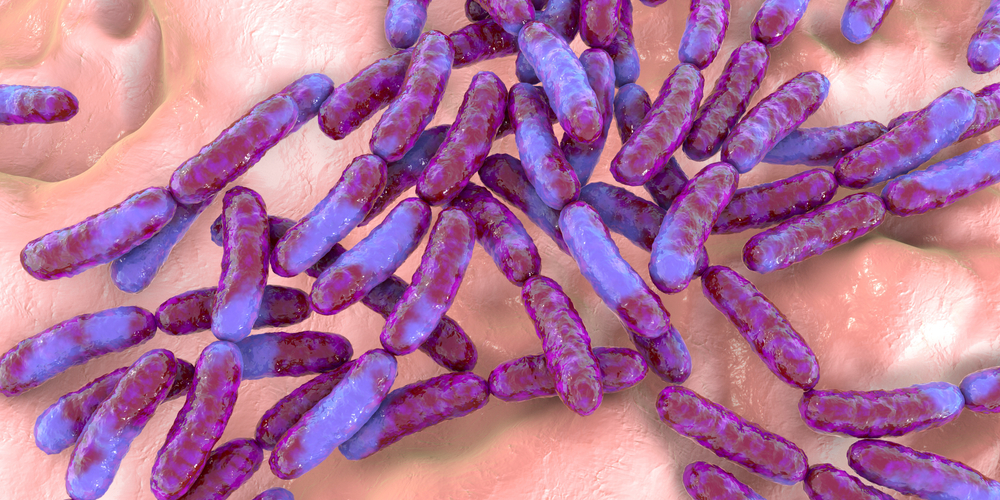
Probiotics – at least certain strains – are necessary for clear skin. But again, we don’t associate them with a beautiful complexion, do we?
People with stubborn, inflammatory skin conditions will buy, and try anything that sounds good, often spending a lot of money on external products. For example, special medicated cleansers, harsh exfoliating scrubs, drying masks, glucocorticoid drugs, and medications (cyclosporine), all of which generate billions of dollars for their respective industries.
With the use of face masks nowadays due to COVID, more adults are developing skin irritations and acne around their nose and mouth. This is because the moisture is trapped under the mask, and there are opportunistic bacteria all over your skin, especially in that area which is often oily. Combined with the mask, we have more psychological stress and a poor diet and all of this is creating more and more issues on our skin, and on our face. No amount of Botox or fillers will fix the oxidative stress that takes place, and the imbalance inside the gut.
Only the lucky people, who have done their due diligence in research, know that there is a “gut-skin axis” in the human body, and that the skin barrier is an interface between the outer environment, and your body. Similarly to your gut barrier, there are microbes living on the skin barrier!
To give you a sense of how important your skin barrier is, consider that there are about there are about 50 million bacteria per square inch of healthy skin. And about 500 million bacteria per square inch if you have an oily face with acne.
If many of the organisms residing on your skin are pathogenic, you’re likely to have some of those embarrassing and/or painful issues that go along with it such as blemishes, pustules, pimples, red rashes, itchiness and raw or sensitive skin. So keep this in mind the next time you’re tempted to spend $60 on the next best astringent or mask.
If our skin has a microflora too, just like the gut microflora, and there are pathogens living on it, as well as friendly bacteria, why don’t more dermatologists tell us to take over-the-counter probiotics? Why do we just get a script for steroid creams or drugs like Isotretinoin?
It’s a good question, one I’ve wondered myself because I’m a pharmacist and saw plenty of customers, adolescents and adults who dealt with stubborn skin diseases. Never once did they ask me where the probiotics were in the pharmacy. Wound healing is another area where “gut bugs” matter.
People with wounds that are slow to heal, as in diabetic patients, and even nondiabetic people who take weeks to heal a paper cut… is that you? Do you require a long time to patch up a finger cut, or a sore spot from a recent biopsy? This could be the result of many things, including a zinc deficiency, but it could also mean poor probiotic status. This has been scientifically studied and it’s a fact.
The 3 Most Useful Probiotic Strains
Driving out the pathogenic organisms, and adding more healthy probiotics to your diet can improve your skin, faster than anything you apply to your facial skin. While topical products are good, they are only temporary.There are many important strains that support gut health, as well as skin health.
You can do some research on your own, but the 3 most important strains are these and they’re in DermaScript Caps.
1. Lactobacillus plantarum – Helps with skin hydration and protection from UV light. It helps your body manufacture its own natural antimicrobial peptides, which fight pathogens. It has significant antioxidant activity as well. There is research that shows L plantarium is able to suppress the growth of gas-producing bacteria in the gut. It reduces MMP-2 and MMP-9, two highly inflammatory compounds that harm your skin when produced in excess.
2. Lactobacillus Reuteri – Studies have shown that this strain is a very strong anti-inflammatory and able to reduce levels of TNF and certain interleukins. Similar to other strains, symptom improvement from rosacea and acne have been reported with this particular strain.
3. Lactobacillus Rhamnosus – Like other probiotics, this strain helps strengthen the mucosal barrier in the GI tract. L. rhamnosus is one of the most widely used probiotic species because it helps many health conditions, including those that affect the epidermis. Adult acne may be caused by hormonal imbalances as you know. But new evidence also suggests that insulin signaling problems cause it too. In this scenario, L. rhamnosus alters gene expression (in a good way) to improve insulin signaling and help reduce acne.
If you spend a little time reviewing the scientific literature and reading about it, you’ll soon agree that therapy with probiotics holds great potential the treatment of various stubborn skin diseases including, but not limited to, eczema, atopic dermatitis, allergic skin reactions, rosacea, sun damage and wounds in general.
Maybe you have questions …
The answers I give below are strictly my opinion. I am not a dermatologist or physician, so please ask your local practitioner if you want a second opinion. 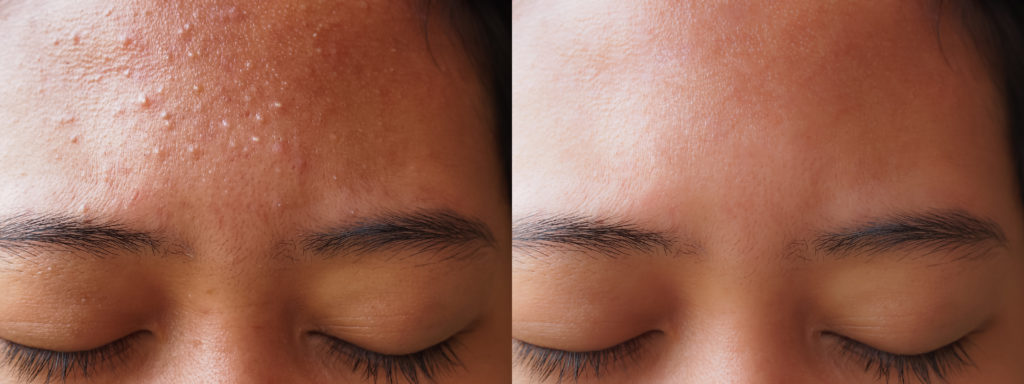
1. Should you apply these to your skin, or take them as a supplement?
In my opinion, it is fine and useful to apply cosmetic products to your skin that contain probiotics. It could be helpful too. But ideally, you would be taking the probiotics internally so that they could positively impact your gut microflora, which in turn tells your immune system to calm down, and in turn, inhibits the amount of toxic breakdown products (what I referred to above as “pieces and parts”) to invade your bloodstream and your skin.
As I relay this to you, I’m seeing a visual analogy which should describe it better for you. Imagine a home burning down in a community. You can take a fire hose and spray the outside of it. That is fine, and useful, and it won’t hurt anything, in fact, it would obviously help.
But to really end the fire, the firemen should drag the fire hoses inside of the home, and aim them properly at the source. Now, the fire will go out faster! This is how I see it with topical application of probiotics versus oral supplementation with them. Would you wipe the probiotics onto the skin surface, or direct them to the source internally where they can signal your immune system in a healthier manner?
2. Can you eat yogurt and get them?
No, don’t bother. The once “live, active cultures” are dead after processing, plus you’re not getting a high enough dose to treat a skin condition, and they fail to contain all the skin-supportive strains. You can enjoy yogurt for other reasons, but don’t do it for skin health – there is no benefit. Also, do not be taken for a fool if your tub says “made with live, active cultures.” Of course it was! All yogurt is made with live, active cultures, that’s how it’s manufactured! But they are die after the heat treating phase.
3. Will there be a die-off reaction, and more diarrhea from re-populating your gut.
Most people do not have any issues, they simply notice improved digestion, less gassiness, less stomach cramping, fewer episodes of acid reflux, and more energy. The last one always confuses people. How do probiotics give you energy? They make more thyroid hormone for you which is an energy hormone.
Probiotics improve thyroid hormone activation in the intestinal tract by about 25%, and thyroid hormone is a stimulant, so you see better energy levels, generally speaking. If the topic of thyroid interests you, CLICK HERE to read my article, Hypothyroidism: Often Mistaken for OCD, Depression or Anxiety.
There could be a die-off reaction in some individuals, but it’s not a given. We’re all unique. For example, if your gut microflora is in bad shape from years of dysbiosis, and a breach to the intestinal wall (aka high intestinal permeability), then re-populating it with healthy strains is going to basically ‘evict’ the bad (pathogenic) strains that have resided there for years.
They’ll die off. With that, you’ll hear more stomach noises, or feel cramps, and experience mild diarrhea for a week. It’s not necessarily a bad thing, just stay hydrated and perhaps back off the dose a little.
Repopulating the gut can’t be done overnight. It takes time and patience. So yes, it’s possible to get a die-off reaction if you supplement with a high-quality probiotic blend. It may occur in the first 7-14 days and may be accompanied by slight discomfort, but nothing serious.
If you develop severe GI pain, or constant diarrhea, or anything serious, you should discontinue the brand you’re taking, and of course maintain hydration, and check with a real doctor. Nothing here is medical advice, I’m just providing information about probiotics for educational purposes.
4. Where can you buy these 3 strains?
The strains I mentioned today are all available commercially, either as stand-alone products, or in multi-tasking probiotic blends (that contain other strains). The three strains above are blended together as a raw material called ProBeautyShield® to supplement formulators.
I have imported this blend from a company in France, and put it in one of my supplements which I sell, it heals the dermal layer and supports beautiful skin. CLICK HERE to learn about DermaScript and how it can help you achieve a more beautiful, radiant YOU! I have also created a video for you to watch, just scroll down the page to watch it on THIS LINK.
5. How long before effects are seen?
With probiotics, the effects are quite fast. You may have decades of skin problems, and various different problems all at once, but once you begin taking the right strains of probiotics, you may notice benefits within a month or even two. It doesn’t matter how challenging the skin problem is either.
For example, someone with mild acne may see benefits within the same time as someone with a bunch of itchy, red inflamed eczema patches all over their body. It may still only take a month or perhaps two for you to notice some improvement. With continued use, you will see even more and more benefits.
Summary
Taking probiotics is not the only, or even necessarily the best way to address skin concerns, it depends on the type of skin condition and whether it’s immune-related or not. So probiotics are just one piece of the puzzle when it comes to a glowing healthy complexion.
But they do play a critical role in achieving beautiful skin. We know that people with gut problems (who lack healthy microflora) have challenging skin problems as well, at least in many cases. You commonly see skin issues with people who have SIBO, IBS, Crohn’s, Celiac, gluten sensitivity, dairy intolerance, and other gut-related disorders.
Large well-designed clinical trials (mostly on animals) and several meta-analyses have all concluded that probiotics positively impact the skin barrier, this is known. The probiotics affect the immune system, as well as gene expression, and in doing so, benefit many autoimmune skin conditions. Having a healthy gut microbiome (lots of friendly probiotics) is also known to destroy the bacteria known to cause acne on the face. With the skin, it’s all about homeostasis in the microflora, and having the good cops (probiotics) drive out the bad guys (opportunistic bacteria).
Probiotics may be especially helpful for the skin of people who have existing GI diseases (Crohn’s, IBS, SIBO, etc) because improving dysbiosis means putting out the autoimmune fire. In other words, probiotics calm the cytokine storm that otherwise attacks the skin matrix.
Probiotics could make the difference between 10 flareups each year, and 3 as an example! It could make the difference between an attractive complexion, and one that is riddled with bumps, red/itchy sores, scaly rashes, dark spots and pimples.
In my opinion, and the expert opinion of others who are familiar with the skin-gut axis, probiotics are a simple, affordable tool that provides various benefits, without much risk. Probiotics are sold nationwide, even the 3 strains that I talked about today. Those specific strains are available at most health food stores in combination blends with other strains of course… and they are available as a proprietary blend called ProBeautyShield®, an ingredient in DermaScript Clear Complexion Caps which you can learn more about HERE.

Suzy Cohen, has been a licensed pharmacist for over 30 years and believes the best approach to chronic illness is a combination of natural medicine and conventional. She founded her own dietary supplement company specializing in custom-formulas, some of which have patents. With a special focus on functional medicine, thyroid health and drug nutrient depletion, Suzy is the author of several related books including Thyroid Healthy, Drug Muggers, Diabetes Without Drugs, and a nationally syndicated column.
